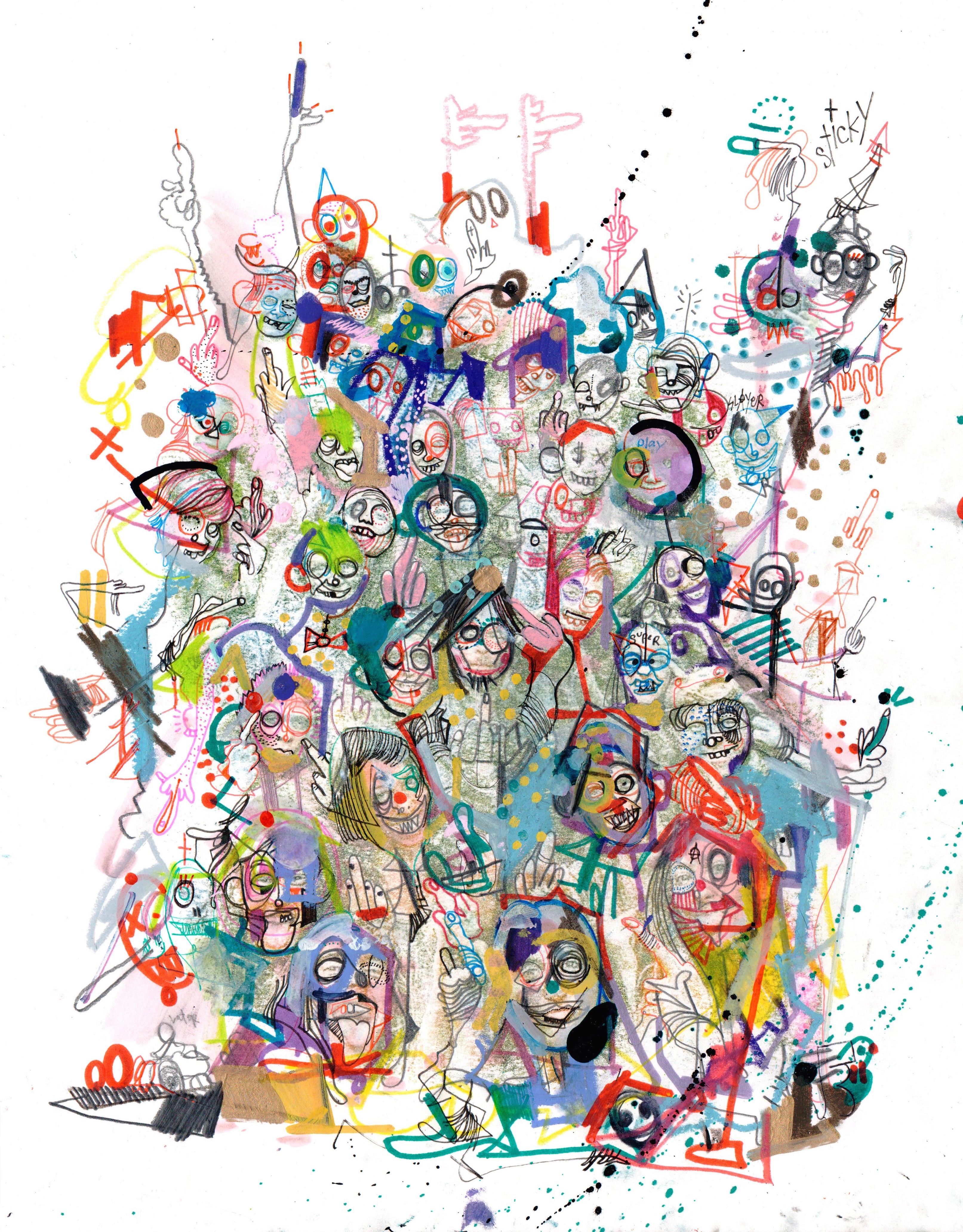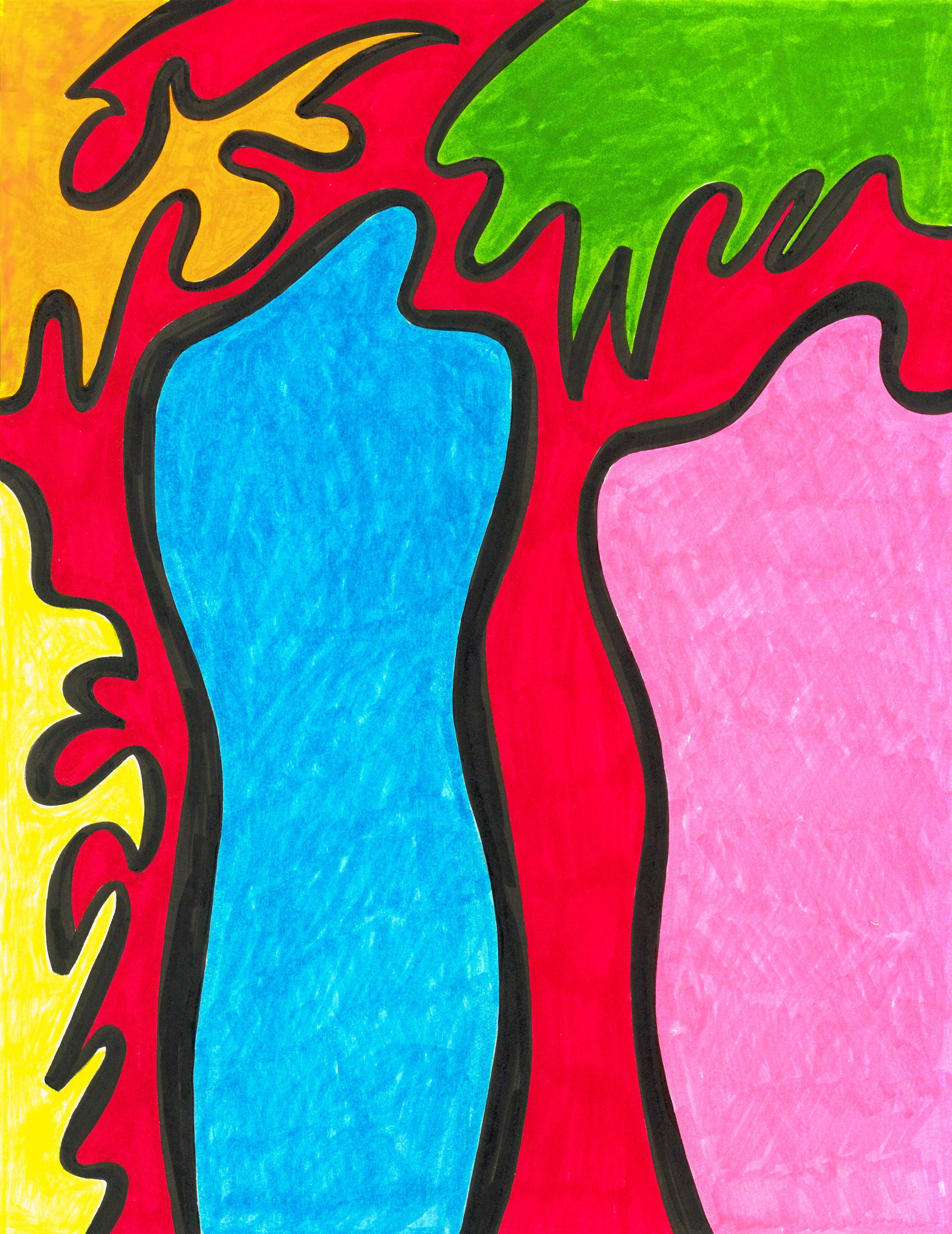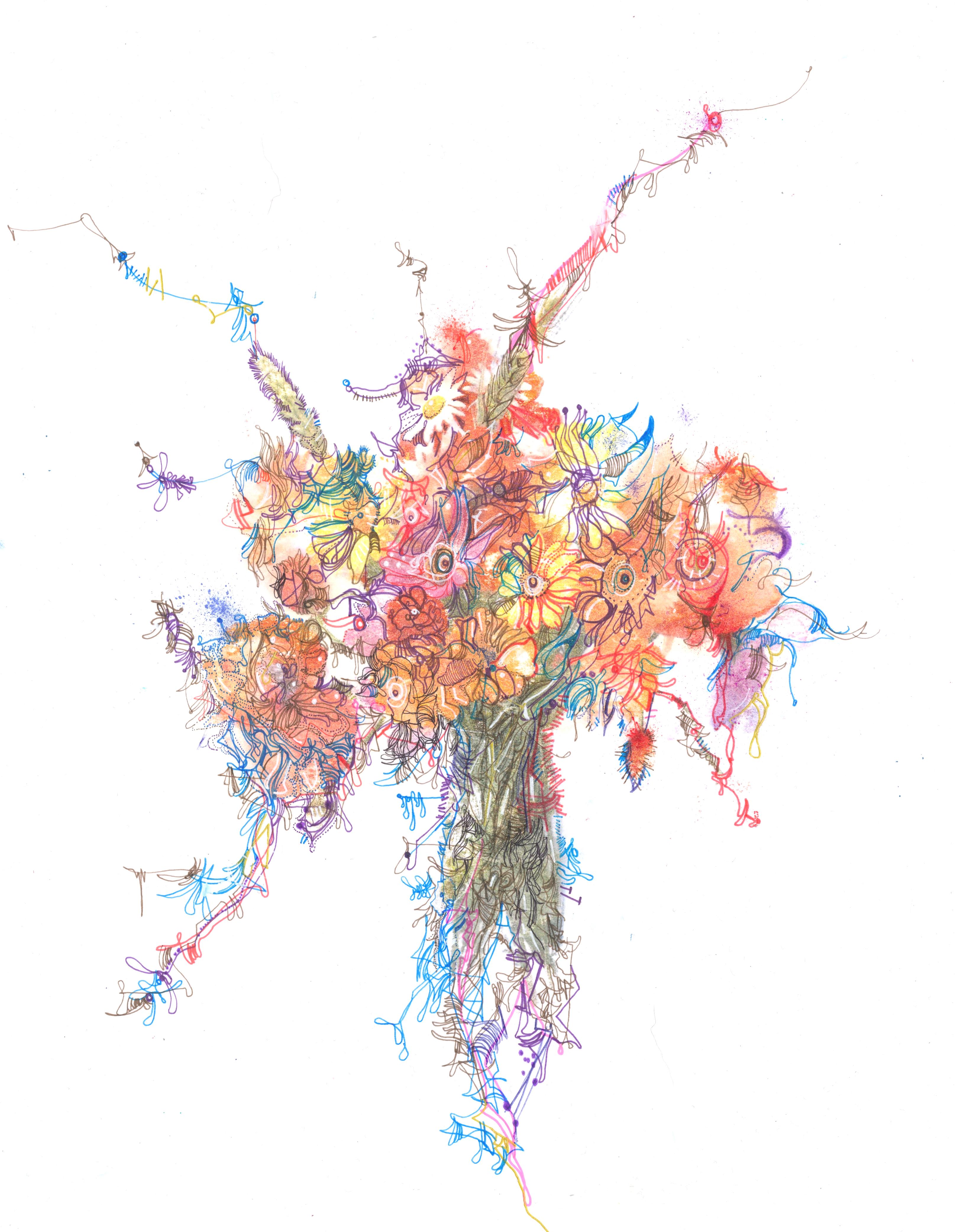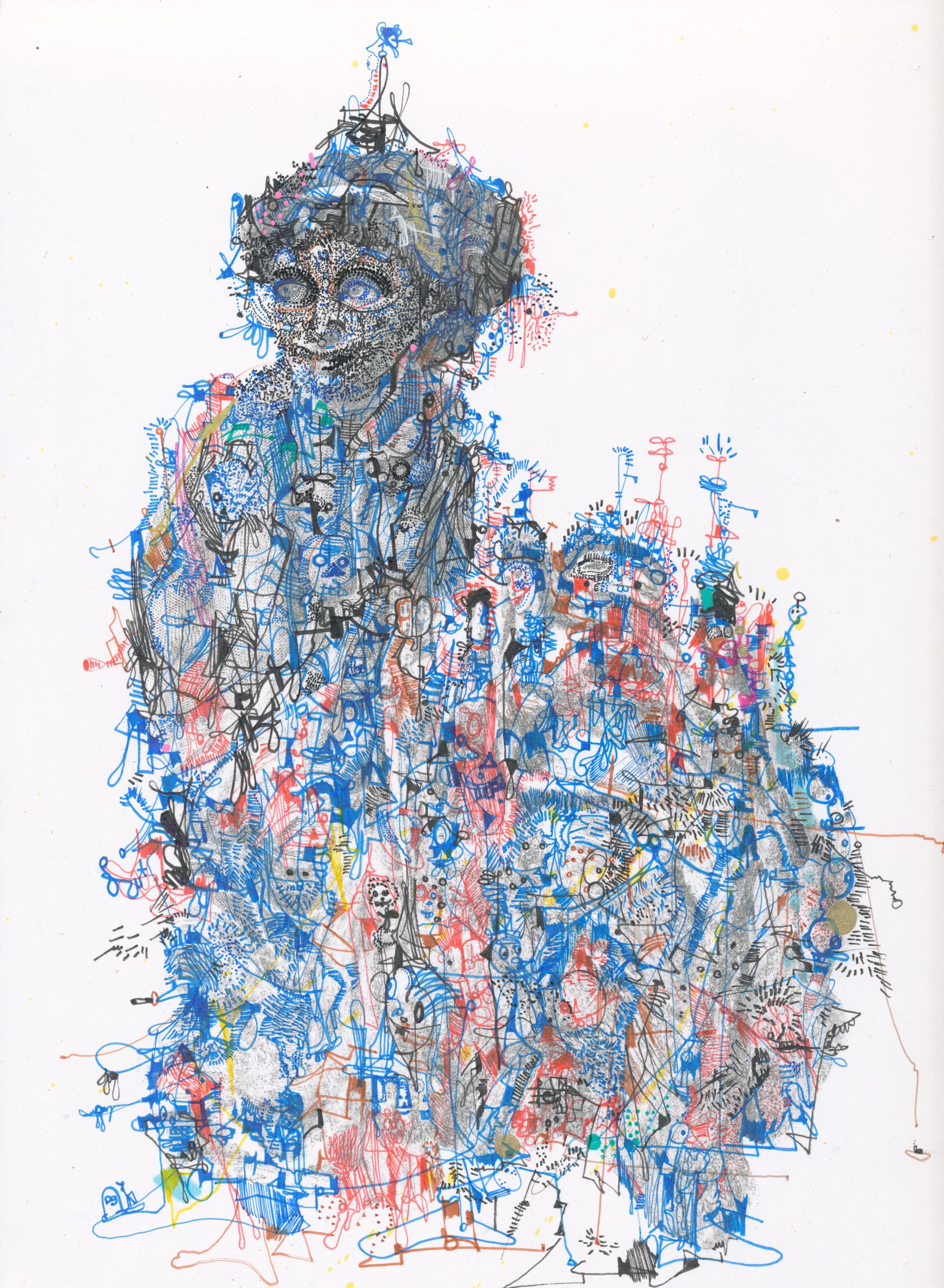Tracey EminWanting You, original (unique) hand signed drawing - Framed 2018
2018
About the Item
- Creator:Tracey Emin (1963, British)
- Creation Year:2018
- Dimensions:Height: 11.75 in (29.85 cm)Width: 14 in (35.56 cm)Depth: 1.5 in (3.81 cm)
- Medium:
- Movement & Style:
- Period:
- Condition:
- Gallery Location:New York, NY
- Reference Number:1stDibs: LU1745214179712
Tracey Emin
Tracey Emin was born in Croydon, in South London, in 1963, and raised in Margate, Kent. She studied fashion at the Medway College of Design (now the University for the Creative Arts) from 1980–82. At Medway, she met Billy Childish, who would become a huge inspiration for her work, and became closely associated with The Medway Poets. During this time, Emin became the administrator for Childish’s small printing press, Hangman Books.
In 1984 she went on to study printing at Maidstone Art College. In 1983, Emin opened a shop with fellow artist Sarah Lucas, called The Shop in Bethnal Green. The Shop sold works by Emin and Lucas, including original t-shirts and ashtrays featuring iconic artist Damien Hirst.
In November 1993, Emin held her first solo show at White Cube in London. She named her autobiographical exhibition “My Major Retrospective,” which largely consisted of personal photographs, photos of her own early paintings that she had destroyed, and a few emotionally charged items such as a packet of cigarettes her uncle was holding when he was decapitated in a car crash.
In 1994, Emin toured the United States, making stops en route with partner Carl Freedman to give readings from her autobiographical book Exploration of the Soul. In 1995, Emin produced her famous “tent” — Everyone I Have Ever Slept With 1963-1995 — which was exhibited in Freedman’s curated show “Minky Manky” at the South London Gallery. This piece was later bought by Charles Saatchi and included in the acclaimed 1997 “Sensation” exhibition at the Royal Academy of Arts in London, going on to tour Berlin and New York.
Emin appeared on a Channel 4 television series in 1997 titled Is Painting Dead? that largely comprised a discussion over the Turner Prize. Two years later, in 1999, Emin was shortlisted for the Turner Prize herself and exhibited My Bed at the Tate Gallery. In the same year, she exhibited a number of monoprint drawings inspired by Princess Diana for an exhibition at The Blue Gallery, London.
Elton John and George Michael are both famed collectors of Emin’s work, with Michael holding the “A Tribute to Tracey Emin” exhibition in September 2007 at the Dallas-based Goss-Michael Foundation. A solo exhibition, “This is Another Place,” was held at the Modern Art Oxford from 2002–03, and in 2007, Emin was included in the British Pavilion at the Venice Biennale. The same year, Emin was made Royal Academician by the Royal Academy of Arts. She has previously been invited to include works at the Royal Academy “Summer Exhibitions” dating back to 2001. Emin curated the 2008 “Summer Exhibition” and gave a public talk and interview with Matthew Collings, during which they mused on her role within the Royal Academy. Emin’s art has fetched astronomical amounts at auction, selling to Charles Saatchi, the 2011 Prime Minister (David Cameron), David Bowie and more for their private collections.
Find original Tracey Emin prints and other art on 1stDibs.
- ShippingRetrieving quote...Ships From: New York, NY
- Return PolicyA return for this item may be initiated within 1 day of delivery.
- Ruckus Rodeo (unique acrylic painting by famed Pop artist w/ Marlborough label)By Red GroomsLocated in New York, NYRed Grooms Ruckus Rodeo, 1975 Acrylic and felt tip pen on paper Signed and dated in black felt marker Unique work Provenance: Marlborough-Gerson Gallery, with original label verso Frame included: in museum frame with UV plexiglass Measurements: 22.75 inches vertical by 19.75 inches horizontal by 1.5 inches Work 16.5 inches vertical by 13.5 inches horizontal This work on paper, Ruckus Rodeo, is a unique study by Red Grooms for one of the most popular works of art in the Museum of Modern Art, Ft. Worth, Texas's collection. Ruckus Rodeo is an immense, walk-through work of art that covers 1,237 square feet of gallery space. It consists of painted two-dimensional surfaces and sculptural three-dimensional figures that re-create the Fort Worth rodeo. Grooms has referred to this work as a "sculpto-pictorama." Sculpture wire, canvas, burlap, acrylic paint, and a fiberglass compound known as celastic were used to construct the work’s Texas-sized, larger-than-life, three-dimensional caricatures of rodeo archetypes, which include the rodeo queen and her steed, a bucking bronc, playful rodeo clowns, and a giant yellow bull named Butter. Ruckus Rodeo was commissioned for the Museum's 1976 exhibition The Great American Rodeo. Grooms was one of eleven artists invited to create a work for this show. In preparation, he attended every rodeo performance during Fort Worth's 1975 Stock Show and made many sketches. From these studies, Grooms drew a panoramic rodeo scene spanning more than seven feet, which served as the basis for Ruckus Rodeo's design. Grooms returned to his studio in New York to fabricate the work's major figures. In 1976, he returned to Fort Worth with the talented fifteen-member group of painters, sculptors, engineers, and carpenters known as the "Ruckus Construction Co.," who helped in the final assembly of Grooms's robust tableau. Associate Curator Andrea Karnes commented, "Ruckus Rodeo portrays the chaos, entertainment, and danger of the Fort Worth rodeo. Grooms's engaging work is characterized by a grand sense of spectacle, encompassing the ritual, pageantry, and disorderly commotion of a real rodeo event. The artist's interest in naive and primitive objects, such as folk art puppets and toys, is easily seen in this work. His rich, arbitrary use of bold and unmodulated colors combined with angular contours creates a loud, brash ambience. Despite the work's cartoonish flair, it is clearly inflected with an urban sensibility. The characters' outfits, for example, are more like the vibrant apparel of the urban cowboy...Category
1970s Pop Art Figurative Drawings and Watercolors
MaterialsAcrylic, Felt Pen
- Where the End Starts (original hand signed drawing created for museum employee)By KAWSLocated in New York, NYKAWS Where the End Starts, 2016 Original Ink on paper drawing on offset lithograph Hand signed and dated by KAWS lower front Accompanied by hand signed letter of provenance from the Modern Art Museum, Ft. Worth staffer who received this work as a gift from KAWS Unique work Frame included: matted with gold matting and a white frame with UV plexiglass This is a very special work with superb provenance: A unique, signed drawing done by KAWS, which he created exclusively for a staff member at the Modern Art Museum in Ft. Worth, Texas. on the occasion of KAWS monumental exhibition. The drawing was done on the museum's publication for KAWS 2016...Category
2010s Street Art Abstract Drawings and Watercolors
MaterialsInk, Offset, Lithograph, Mixed Media, Permanent Marker
- "Your Own Heart" unique signed, colleague of Warhol, Haring, Basquiat & ScharfBy Ronnie CutroneLocated in New York, NYRonnie Cutrone Your Own Heart, 1987 Watercolor and Silkscreen on Paper Signed, dated and numbered from the edition of 7, with each work being unique. 40 × 30 inches Fantastic vintage classic 1980s Ronnie Cutrone Watercolor and Screenprint on Paper. From an edition of 7 with each work being unique. There is a very slight pinhole to the top corners which will frame out, otherwise in very good condition Unframed Ronnie Cutrone (July 10, 1948 – July 21, 2013) was an American pop artist known for his large-scale paintings of some of America's favorite cartoon characters, such as Felix the Cat, Pink Panther, Woody Woodpecker and No Glove No Love. Cutrone's paintings are colorful, lively, and less challenging than those of his contemporaries. As Andy Warhol's assistant at the Factory atop the Decker Building from 1972 until 1980, Cutrone worked with Warhol on paintings, prints, films, and other concepts, eventually co-opting Warhol's earliest work (pre-1960) as well as works by Roy Lichtenstein and others, until finally distilling those myriad influences into the style a few critics eventually labeled "Post-Pop." He exhibited at the Niveau Gallery in 1979 with a Scottish artist called Mike Gall who showed paintings of Snoopy, Mickey and Minnie mouse, the Pink Panther and also a small series of Peter Rabbit paintings...Category
1980s Pop Art Abstract Drawings and Watercolors
MaterialsWatercolor, Screen, Mixed Media, Permanent Marker
- Bicycle drawingBy ArmanLocated in New York, NYArman Bicycle Drawing, 1991 Original bicycle drawing done on fold-out invitation "Archeology of the Future" Arman's signature within the drawing in bla...Category
1990s Abstract Abstract Drawings and Watercolors
MaterialsPermanent Marker
- Unique drawing on Tony Shafrazi poster, signed & inscribed to Warhol's boyfriendBy Kenny ScharfLocated in New York, NYKenny Scharf Original drawing on Tony Shafrazi poster, signed and inscribed to Andy Warhol's last boyfriend Jon Gould, 1984 Permanent marker drawing on Kenny Scharf Tony Shafrazi Gallery exhibition poster (hand signed and inscribed by Kenny Scharf) Boldly signed and inscribed to Andy Warhol's last boyfriend Jon Gould Frame included: Framed in a museum quality wood frame with UV plexiglass. Measurements: Frame: 35 x 28.5 x 1.5 inches Print 28.25 x 22 inches Own a piece of Pop Art history! This is a unique drawing hand signed and inscribed by Kenny Scharf, done on a vintage collectible 1984 poster from the legendary Tony Shafrazi Gallery. If you saw "The Andy Warhol Diaries" on Netflix, you'd know about Warhol's relationship with Jon Gould - Andy's last boyfriend; tragically, Warhol would become Gould's last boyfriend as well, when, soon after, Gould would die of AIDS at the young age of 33 Kenny Scharf created an original drawing, done in marker, and inscribed it to Jon Gould (featured prominently in Andy Warhol's Diaries and the eponymous Netflix series) - and it had not been seen since the 1980s. Jon Gould was a New England educated former Vice President of Corporate Communications at Paramount Pictures - a Boston Brahmin whose real claim to fame was as Andy Warhol's last boyfriend. This work was acquired from the widely publicized sale of the collection of Jon Gould - -a treasure trove of valuable gifts and art works by Warhol and others like Kenny Scharf, Basquiat and Keith Haring to Gould - that had not been seen in nearly four decades. This is one of the works from that impressive sale. Below are links to two of the many articles about the collection of Jon Gould in the New York Times, Artnet News and the New York Post respectively. About Kenny Scharf: Kenny Scharf (b. 1958, United States) is a renowned artist affiliated with the 1980’s East Village Art movement in New York. Scharf developed a distinct and uniquely personal artistic style in paintings as well as sculpture, alongside his mentor Andy Warhol, and contemporaries like Jean-Michel Basquiat and Keith Haring with whom he pioneered contemporary street art. References to popular culture reoccur throughout his works, such as appropriated cartoon characters from the Flintstones and Jetsons, as well as imagined anthropomorphic creatures. Through ecstatic compositions and a dazzling color palette, Scharf presents an immersive viewing experience that is both intimate and fresh. Scharf’s multifaceted practice—spanning painting, sculpture, installation work, murals, performance and fashion—reflects his dedication to the creation of dynamic forms of art that deconstruct existing artistic hierarchies, echoing the philosophy of Pop artists. Yet Scharf’s artistic significance expands beyond the art historical terrain of Pop Art; the artist instead coined the term “Pop Surrealist” to describe his one-of-a-kind practice. His inclusion in the 1985 Whitney Biennial marked the start of his international phenomenon, a reputation that continues to thrive today. Courtesy of Almine Rech MORE ABOUT JON GOULD: Warhol wrote extensively on Jon Gould in his diaries. In July, 2022, when the Netflix series "The Andy Warhols Diaries" came out, the New York Post (among many other publications) ran a major feature article on Warhol's relationship with Gould and on this very sale: It reads, "When Harriet Woodsom Gould died in 2016 in her nineties, she left behind a trove of family heirlooms dating back to the 1700s in her Amesbury, Mass., home. Yet in her attic, she had a secret veritable shrine to pop art. There, she had stashed her late son Jon Gould’s belongings for decades since his death in 1986 from AIDS. He had vases painted by Jean-Michel Basquiat, works by Keith Haring and dozens and dozens of gifts — photos, valentines, sketches, letters and more — from pop god Andy Warhol. “My mother kept everything,” Jon’s twin brother, Jay Gould, told The Post. Jay knew his brother “had some type of relationship” with Warhol in the 1980s, though Jon always remained discreet about it. “We were very close, identical twins, but we never talked a lot about his sexuality,” Jay, now 68, explained. “It was a different time.” Yet, he was still stunned to read the poetry and love notes Jon wrote to the older artist. “I didn’t realize the relationship was as deep as it was.” Actually, no one really knew. Gould was Warhol’s last romance, a young Paramount executive with floppy hair and preppy good looks who died tragically at 33. And though Warhol frequently mentioned him in his famed diaries, published posthumously in 1989, the artist’s dashed-off musings gave the impression that Jon was more of a crush than a genuine partner...Gould didn’t so much enter into Warhol’s life as Warhol willed him into it. It was April 1981, and Warhol, then 52, was still reeling from his breakup with Jed Johnson... Jed left that December, and that spring Warhol confessed to feeling lonely: “I’ve got these desperate feelings that nothing means anything. And then I decide that I should try to fall in love, and that’s what I’m doing now with Jon Gould.” Gould was a 26-year-old Paramount exec: a New England WASP with a lithe, strong physique and charismatic personality, who looked straight. Warhol reasoned: “Jon is a good person to be in love with because he has his own career, and I can develop movie ideas with him, you know? And maybe he can even convince Paramount to advertise in Interview, too. Right? So my crush on him will be good for business.” Warhol began courting Gould with a vengeance, sending extravagant bouquets of roses to his office at Paramount. He even offered their mutual friend, the photographer Christopher Makos, a fancy watch if he could get Gould to be his boyfriend. “I guess he never got loved,” Makos says in the series. “Because I didn’t get my watch.” (Jay Gould also tells the camera that his brother had admitted that he was in a relationship but that he said they didn’t have sex.) At first, Gould resisted Warhol’s attention, but eventually the two began spending a lot of time together, though Gould would frequently pull away if things got too intense, and he often would tell Warhol not to write about him in his diary. “I think my brother was concerned about his career at that time,” Jay Gould said. But the younger man attended parties and art events with him, invited the artist skiing with his family in Aspen and even for a time moved into his place on 66th Street. “I love going out with Jon because it’s like being on a real date,” Warhol wrote early in their relationship. “He’s tall and strong and I feel like he can take care of me.” Yet it turned out that Warhol would have to take care of Gould. On Feb. 4, 1984, Jon was admitted to New York Hospital with pneumonia — though it was understood that he had AIDS. Warhol stayed with him in the hospital every night for the 30 days he was there, despite his fear of hospitals since getting shot and his fear of getting AIDS. (Warhol couldn’t bring himself to talk about Gould’s illness in the diary, but his editor notes that when Gould was released March 7, Warhol instructed his housekeepers to wash Jon’s clothes and dishes “separate from mine.”). Around 1985, Warhol began working on his massive series of 100 works based on Da Vinci’s “The Last Supper...Category
1980s Pop Art Abstract Drawings and Watercolors
MaterialsPermanent Marker, Lithograph, Offset
- Original handwritten Letter of thanks, hand signed by Keith Haring on letterheadBy Keith HaringLocated in New York, NYKeith Haring Original Handwritten, hand signed Letter, ca. 1987 Ink on Haring's Private letterhead Stationery, Hand written and hand signed by Keith...Category
1980s Pop Art Abstract Drawings and Watercolors
MaterialsPaper, Ink, Permanent Marker
- American Contemporary Art by Michael Alan - The Dead WalkingBy Michael AlanLocated in Paris, IDFMarker, watercolor, ink, wash & pen on paper Michael Alan is an American artist born in 1977 who lives & works in New York, USA. As a multidisciplinary artist. His work has been fea...Category
2010s Contemporary Abstract Drawings and Watercolors
MaterialsInk, Paper, Watercolor, Pen, Permanent Marker
- Linda Stein, Knights Revisited 1027 - Contemporary Art Bright Colorful DrawingLocated in New York, NYLinda Stein, Knights Revisited 1027 - Contemporary Art Bright Colorful Drawing Linda Stein started her Knights of Protection series after she was forced to evacuate her New York dow...Category
2010s Contemporary Figurative Drawings and Watercolors
MaterialsPaper, Permanent Marker
- American American Art by Michael Alan - GhostBy Michael AlanLocated in Paris, IDFWatercolor, ink, marker & colored pencil on paper Michael Alan is an American artist born in 1977 who lives & works in New York, USA. As a multidisciplin...Category
2010s Contemporary Abstract Drawings and Watercolors
MaterialsInk, Watercolor, Permanent Marker, Color Pencil
- American American Art by Michael Alan - PositivyBy Michael AlanLocated in Paris, IDFWatercolor, ink, marker & colored pencil on paper Michael Alan is an American artist born in 1977 who lives & works in New York, USA. As a multidisciplin...Category
2010s Contemporary Abstract Drawings and Watercolors
MaterialsInk, Watercolor, Permanent Marker, Color Pencil
- American Contemporary Art by Michael Alan - The Future of ChildrenBy Michael AlanLocated in Paris, IDFPen, ink, marker, pencil, watercolor & colored pencils on paper Michael Alan is an American artist born in 1977 who lives & works in New York, USA. As a multidisciplinary artist. Hi...Category
2010s Contemporary Abstract Drawings and Watercolors
MaterialsInk, Watercolor, Pen, Permanent Marker, Color Pencil
- American Contemporary Art by Michael Alan - Human ArchitectBy Michael AlanLocated in Paris, IDFWatercolor, ink, marker & colored pencil on paper Michael Alan is an American artist born in 1977 who lives & works in New York, USA. As a multidisciplinary artist. His work has bee...Category
2010s Contemporary Abstract Drawings and Watercolors
MaterialsInk, Watercolor, Permanent Marker, Color Pencil






